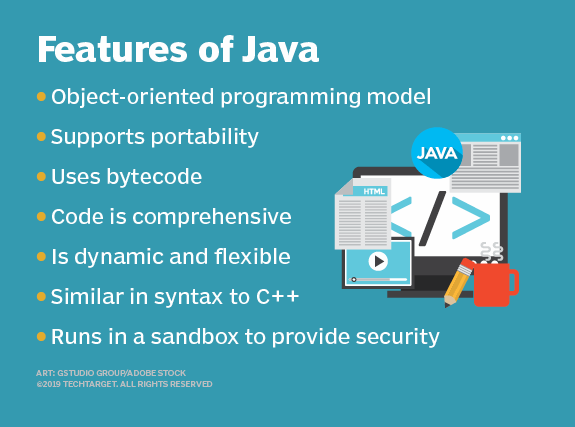Real world Java applications
Applications of Java
Java has been around for almost 30 years, and Oracle regularly boasts that the Java Virtual Machine (JVM) runs on tens of billion devices.
Whatever the specific numbers are, these billions of real-world Java application deployments prove that the Java platform is popularly used to build a wide range of applications, such as the following:
- Online gaming applications like Minecraft.
- Desktop applications like IntelliJ.
- Mobile operating systems like Android.
- Financial applications for companies like Citibank.
- Enterprise Java applications for database persistence.
- Microservices for Docker-based deployments.
- Continuous integration tools like Jenkins.
- IoT apps with the Java Embedded Framework.
- Enterprise business apps with Jakarta EE.
- Browser-based Java apps with WebAssembly.
4 types of Java applications
That list of real-world Java applications breaks down into four basic types:
- Desktop Java applications.
- Enterprise Java applications.
- Mobile device applications.
- Microdevice and IoT apps.
Interestingly, if this list was made 25 years ago, browser-based application deployments would have been at the top of the list. It’s not anymore.

Java applications benefit from Java’s simplicity, portability and dynamic nature.
Browser-based Java applications
When Java was first released, a component known as a Java applet made it possible to run Java inside the web browser. The Java applet, and its integration with the Netscape browser, was one of the key drivers of Java’s popularity in the early days of the Internet.
Sadly, the Java applet was replaced with newer, friendlier technologies including the following:
- JavaScript and JQuery.
- ActiveX controls.
- Flash components.
- Angular and React.
- Responsive web frameworks.
The Java applet API has since been deprecated and removed from both web browsers and the JDK. However, there may be a new renaissance for real-world Java applications that run inside the web browser.
Java apps and WebAssembly
WebAssembly is a new, fourth language of the web that allows code written in languages such as Java or Rust to run inside the web browser. With so many back-end Java applications being actively maintained, it only makes sense for organizations that build back-end applications with Java to also build their browser based app with Java as well.
Historically, Java’s simplicity and ease of use have made it popular in a multitude of sectors in industries. With WebAssembly, the tech sector might return to the early days of the Internet when Java applications dominated in the web browser as well.



